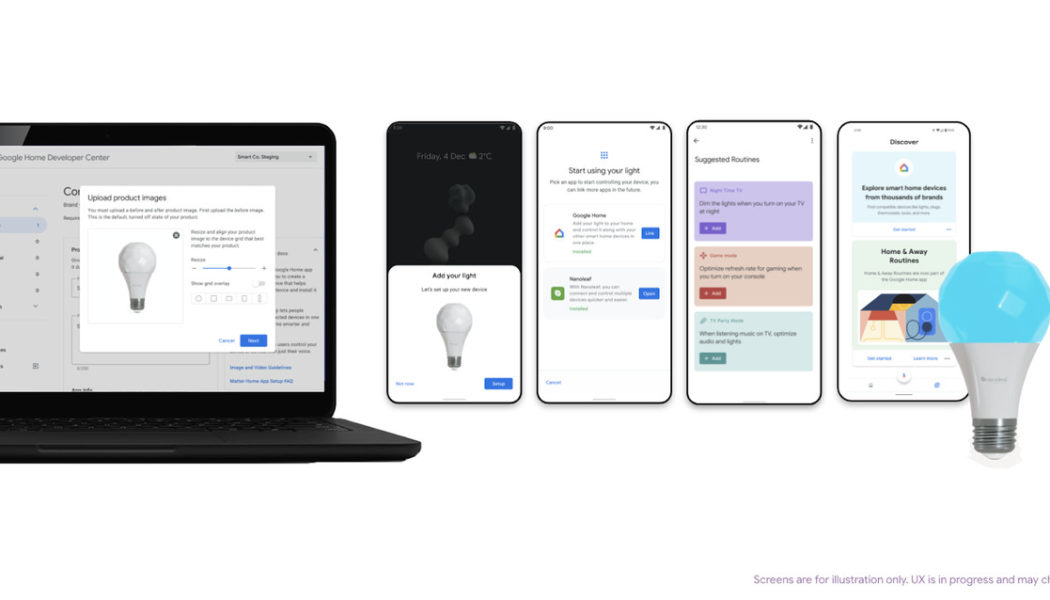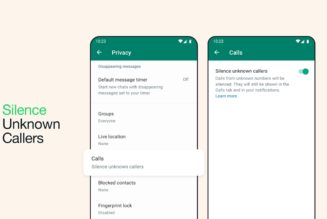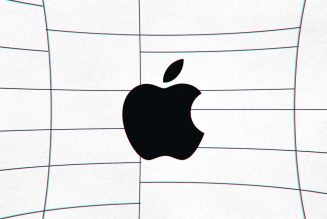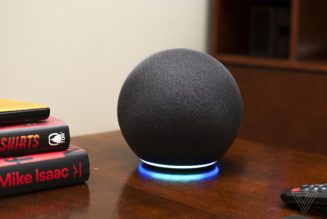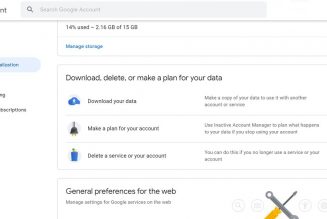Google gave a glimpse into how the new smart home standard Matter might actually work in our smart homes today, and it’s looking pretty exciting. At its Google Smart Home Developer Summit, the company announced new tools to help developers build devices that work with both Google Home, the new connectivity standard Matter, and across any other Matter-complaint ecosystems. This means that, yes — one day, very soon — the (new) Nest Thermostat could work in the Apple Home app without the need for Home Assistant or other workarounds. And if those two can work together, well, anyone can.
Due to arrive next year, Matter is an open smart home application protocol that promises to make smart home devices talk to each other no matter who made them. It wants to take the hard work out of choosing, setting up, and integrating devices with your smart home and voice assistants.
“Matter is a very big initiative for us,” Kevin Po, Senior Product Manager at Google, told me in a briefing ahead of today’s announcements. “It will really solve that interoperability choice, that frustrating purchasing and setup experience for the user.”
:no_upscale()/cdn.vox-cdn.com/uploads/chorus_asset/file/22944994/Fg39T_wZn6cXSyiUsE5VWFJcZYp0HgK4Etnqn9wpNloMdq0RMXnAJdYaXtPwMsaRT_OtxaQHJxKLgjjmZrZmZwRbcSM2WSQ1UEZCxIGaSJg5BVD9crA7hFPauYbso0cLOd6xGLMpiVlCAmR63VS7ihfU8L6kPfruCDqytEUqzeb_uH0J_s1600.png)
At the event, the company doubled down on its commitment to supporting Matter and its main supporting protocol, Thread (a low-powered mesh network), across its entire ecosystem. It also revealed a new name for its smart home efforts: Google Home. While consumers have been familiar with that moniker for a while, on the backend, developers have dealt with a myriad of different services they needed to understand and pick through to figure out how to make their device work with Google Assistant and Google Nest devices.
The new Google Home brings development for device setup, automation capabilities, voice control, and Android and Google Nest devices under one umbrella. The new name is “for our entire smart home platform and developer program,” said Michele Turner, Senior Director of Product for Google’s Smart Home Ecosystem, during the event’s keynote.
A new Google Home Developer Center was also announced. A one-stop shop for developing anything smart home-related, the Developer Center introduces some new tools to help accelerate the adoption of Matter in the smart home.
A Google Home Device SDK for Matter can help developers quickly build and integrate Matter devices so they’ll be ready when the standard launches next year. This is also when Google has committed to updating its Nest and Android devices with Matter support.
Native Android Support via Google Play Services and a new Google Home Mobile SDK will bring Matter support to mobile devices and apps to help streamline smart home device set up. This should mean setting up a Matter-enabled device — such as a light bulb or smart plug — will be as simple as powering it up and opening an app (either Google Home or the manufacturer’s app). The app will then do most of the heavy lifting of connecting to Wi-Fi and Thread, and any other Matter devices you have.
:no_upscale()/cdn.vox-cdn.com/uploads/chorus_asset/file/22944944/9pc16xHlCuF_UeXbhcH2Ln92s8R4glbH6h3f8Fd5MyWI10AQ7ZgpYkWxETyplgBS8GHsFG62THDGT4k5A9SCfTTonAAa3cYA3Bdq52B_7YNZw1Npd_25TId9cfU0COkTIY_K2_Y_kOeIwMzTNK1OhG_bevn22F7ty_cQ5rSpK5LYyl3Z_s1600.png)
There are a lot of questions still around Matter — but from what Google revealed today, it seems that while a unified setup experience is coming, a unified app is not on the cards. There won’t be a Matter-branded app that you can put all your devices into — instead, you can choose to use one or more apps from a Matter-enabled ecosystem to control your home with. This is similar to how HomeKit-enabled devices work with Apple’s smart home now — you can use Apple’s Home app or a third-party app to control them. Each app will likely offer different features and controls based on how the manufacturers look to differentiate themselves, so you can choose which suits your needs best. Whether you have to install the manufacturer’s app for firmware updates or other reasons is not clear yet.
The most important thing for smart home users is that all Matter-enabled devices will work with all apps that support Matter. So, if Apple opens up its Home app to Matter (and it is on the board of the CSA, which oversees the initiative), and Google turns on Matter support in its Nest Thermostat — you will be able to control it in the Apple Home app. “If they are compliant from a Matter of perspective, there’s no reason why that can’t be possible,” confirmed Po.
In other Google Home news, the company announced the introduction of Suggested Routines in the Google Home app. This should go some way to bringing back more of the functionality third-party device makers lost when the Works With Nest program shut down (some of which returned with the Home / Away presence sensing option introduced at this event last year).
Suggested Routines will let manufacturers build their own Routines (which enable your devices to automatically activate) in the Google Home app to interact with both Nest devices and any other third-party devices you have linked to the app. They’ll be able to use what Google calls “context signals” — voice, time, and device/sensor state — to trigger the Routines.
Google is sharing details on its announcements from the Google Smart Home Developer Summit on its blog. Most of the new tools are available in preview now and rolling out next year.
